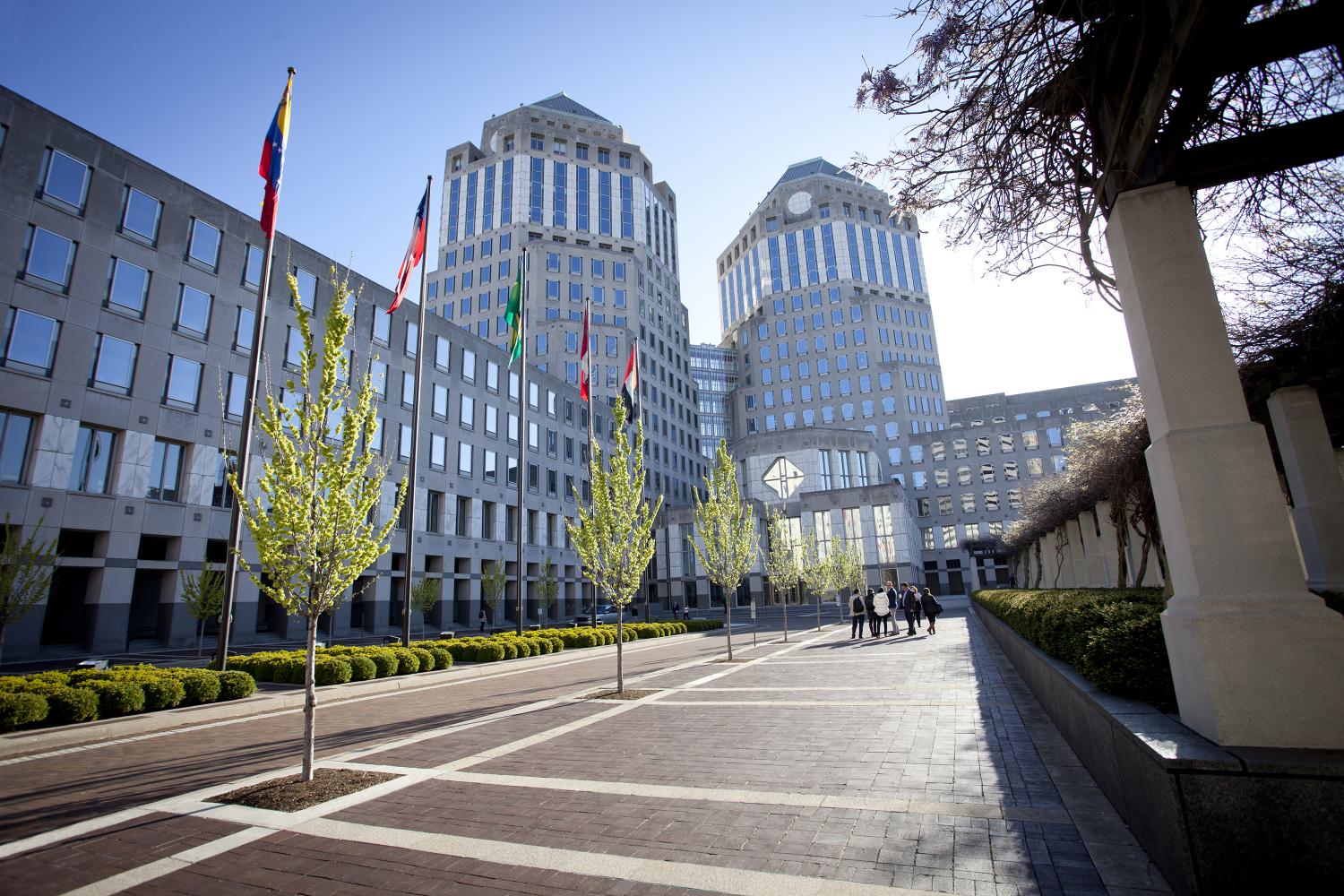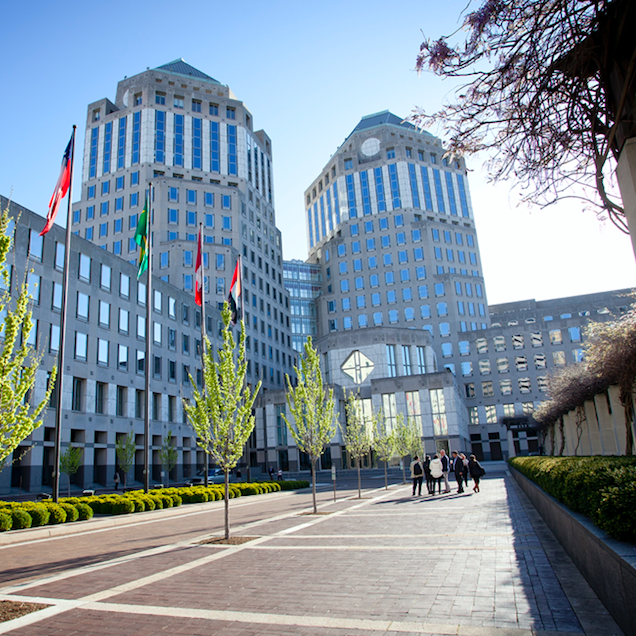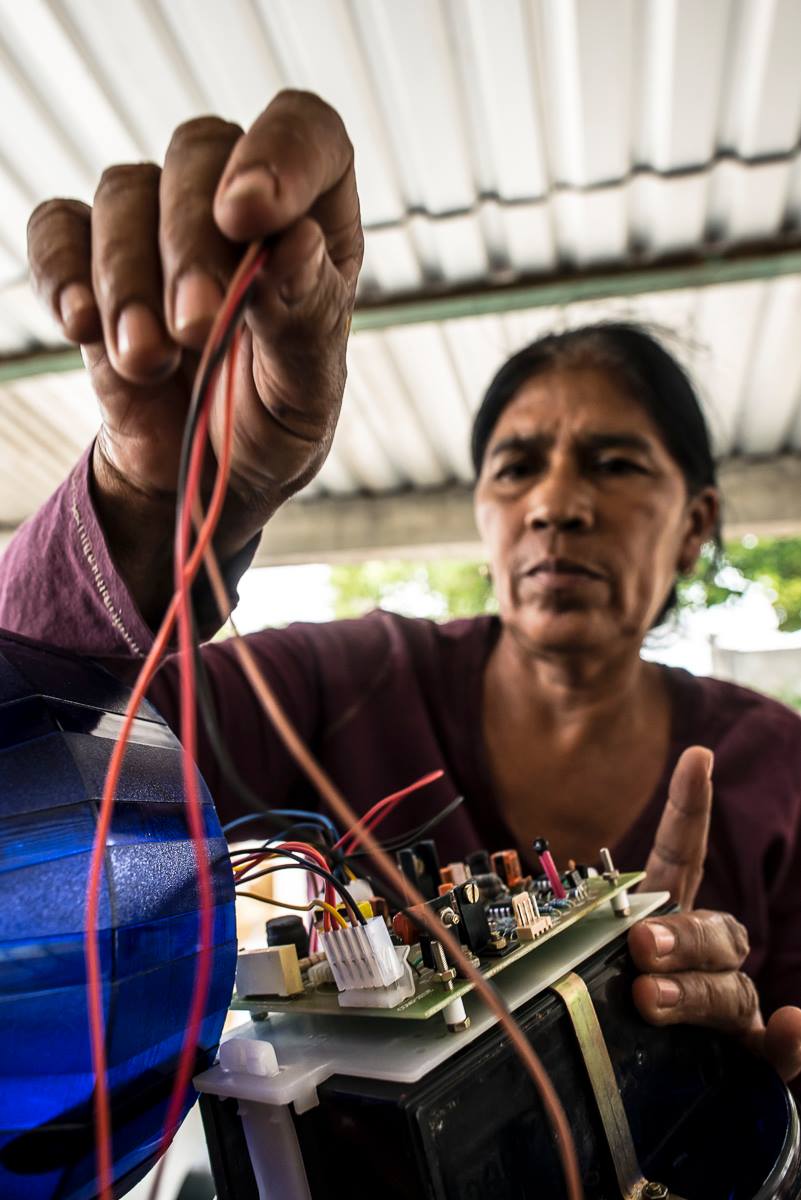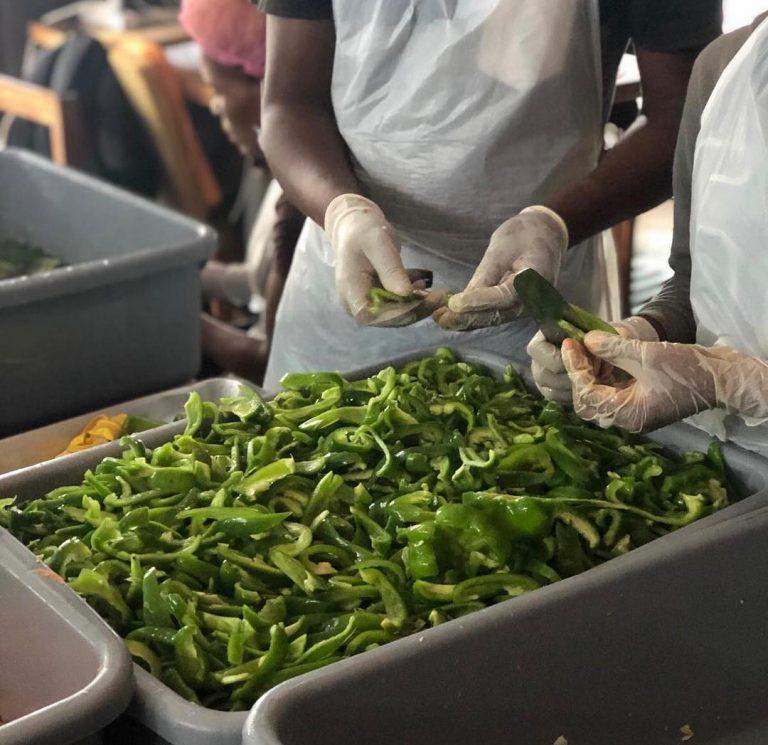With More CSOs on the Scene, We're Sharing Sustainability Communication Tips


As more corporate sustainability officers emerge on the business scene, we can all benefit from their experience - here are a few tips for sustainability communications professionals via some leaders in this field.
Certain job titles are the modern-day version of the buggy whip manufacturer. Thanks to Uber and Lyft, we don’t meet many taxi cab drivers these days. Typewriter repair technicians are tough to find, too.
One profession that is rising is the sustainability communicator.
In 2015, a search on LinkedIn revealed 445 profiles with titles including sustainability and communications. That number is more than 1,100 today.
This growth is noteworthy because there is considerable disagreement about how to label the work that corporations undertake to become better corporate citizens, and where on the organizational chart to place the individuals doing the work. For every LinkedIn explicitly stating they are sustainability communicators, there are probably 10 who do that kind of work without basking in the glow of that cool title.
Some companies talk about their agenda for environmental, social and governance (ESG) progress using the term Sustainability, with a capital “S.” Others prefer corporate social responsibility (CSR) or corporate citizenship. All these monikers qualify companies to claim they are purpose-driven, sustainable businesses—among other terms that are worth watching.
When conference producers dedicate sessions to sustainability communications, the breakout rooms invariably fill to capacity. When London-based Ethical Corporation brought its Responsible Business Summit to New York this spring, some veteran practitioners doled out advice so good that that I felt their pointers were worth sharing with you.
Procter & Gamble’s Virginie Helias, chief sustainability officer for the consumer products giant, warned that internal communications can be derailed by skeptical middle managers. "Don't waste your energy on the naysayers," she advised, adding that she is willing to “name and shame” when appropriate. Emphasizing a “carrot over a stick,” Helias said P&G launched an Ambition 2030 Awards program with middle management as one key stakeholder.
P&G also does a significant amount of external communication on topics ranging from environmental sustainability and gender equality to diversity and inclusion and community impact.
At the global electronic manufacturing services firm Flex, internal communications about sustainability is complicated by the fact that more than half of its 220,000 employees don’t sit at a desk and don’t have a computer, said Kelly Hampton, vice president of global marketing and sustainability at Flex.
Beyond the lack of effective digital communications tools to reach employees, the diversity of the workforce resembles the United Nations in some of Flex’s 100 locations in 30 countries, Hampton said.
“Compliance and safety posters are in 15 languages in one space,” she said, adding that scorecards with red, yellow and green traffic lights are effective in pushing local managers to get behind sustainability initiatives, especially when they know that Flex’s president views the reports.
Flex employee communications initiatives include a focus on Earth Day, Women’s Day, cultural diversity and people with disabilities, said Hampton, emphasizing that 80,000 employees participated in one or more activity during Earth Day week.
“We don’t dictate what the local community or the local site does. We just give them the sandbox to play in,” she said. “The locals suggest the ideas.”
The lobbies of the dormitories at Flex manufacturing sites are used for quarterly coffee talks on sustainability topics, with the events broadcasted in three time zones. Speakers include guests from the U.N. Global Compact discussing the Sustainable Development Goals, environment or gender equality. “People really enjoy hearing a third-party view,” Hampton said.
At Domtar, North America’s largest manufacturer of sheet paper, sustainability is used as a recruitment tool. “’We want to work for a company like yours,’ is what we hear,” said Paige Goff, vice president of sustainability for Domtar. “Sustainability is the number one pull on the Domtar newsroom,” Goff added. “Getting it communicated down to the [manufacturing] floor is what we want to do.” Domtar’s considerable sustainability initiatives can be reviewed here.
Image credit of P&G Headquarters courtesy the company’s media relations site
Cascadian Farm Says This New Cereal Can Help Fight Climate Change


Crops like corn, wheat and oat, which are annuals, must be seeded each year, contributing to soil erosion. But Cascadian Farm is betting that the perennial grain kernza can contribute to the fight against climate change - and win consumers' hearts at breakfast time.
I have an unusual box of cereal in my pantry—the first of a kind, you might say. The manufacturer, organic foods brand Cascadian Farm, claims that kernza, the grain that is the key ingredient in its Honey Toasted Kernza Cereal, helps store carbon, protect water resources and prevent soil erosion. With talk like that, kernza has a lot to answer for.
That's why Cascadian Farm, which was acquired by General Mills in 2000, was happy to send along a sample for me to try—and report back to you. It's part of a limited-edition run of 6,000 boxes while Cascadian Farm figures out how to make kernza a commercial reality by 2040.
Making history
The environmental bonafides of kernza, an intermediate wheatgrass with ancient origins, are intriguing. Fred Iutzi, president of The Land Institute—a nonprofit that is developing varieties of the grain—described kernza as the “first grain crop that is also a perennial in the 10,000-year history of agriculture, and it comes with a lot of heavy-duty ecological benefits.”
Through its often 10-foot-long roots, the grain has the inherent ability to capture carbon from the air, increase soil health, improve water quality and enhance surrounding wildlife habitat, according to The Land Institute. And Cascadian Farm is putting those impacts front and center with the online Deeply Rooted campaign.
Soil under threat
So, why is this campaign important? Grain crops like corn, wheat and oat are annuals that have to be seeded each year, contributing to soil erosion.
Soil is a living ecosystem under threat, according to the Nature Conservancy and its Soil Health Partnership. Soil produces 95 percent of food, filters drinking water, and reduces the impact of climate change through carbon storage. But soil managed for agricultural purposes in the U.S. has lost as much as 60 percent of its original organic carbon content.
Soil erosion is a big concern for farmers, especially as they are hit with record extreme weather events. In an era of climate change, soil health equals resilience.
But healthy soil should also be a concern for the rest of us, according to the Nature Conservancy. In its reThink Soil report, supported by General Mills, the Nature Conservancy estimates that the combined potential of increased soil health practices like planting cover crops during winter or use of no-tillage systems could deliver environmental impacts worth almost $50 billion annually.

Image: Kernza in its natural form.
What the future tastes like
That’s where kernza comes in. While perennial crops are still in the early stage of development, they are another tool in the fight to keep soil healthy—and one with significant potential, said Iutzi of The Land Institute. Kernza in particular has “extraordinarily deep root systems,” meaning it delivers more organic matter to the soil and can sequester more carbon, he said. Its roots are also active in the soil for a much longer swath of the year than annual crops.
“This is literally what the future tastes like,” Iutzi said during a General Mills podcast last month.
So, how does it taste? Can it compete with what's out there? For me and some of my family and friends, who gave the kernza cereal a try with their dairy or nut milk of choice, its sweet and nutty flavor was similar to its wheat-based counterparts. It reminded me of bran flakes. Would we buy it instead of our usual favorite brands? Only time will tell.
As TriplePundit has reported, today’s consumers are demanding more information about how their food impacts people and the planet. Couple that with a food choice that is also nutritious, and it could be a winner. In a recent survey, 93 percent of consumers said they want to eat healthy at least some of the time, and 60 to 70 percent said they're willing to pay premium prices for natural, ethical, enhanced, or “less of …” foods.
The business case for soil health
One fan of the new cereal is Jerry Lynch, chief sustainability officer for General Mills. The company is investing significantly in regenerative agriculture—a term used to describe farming practices that, among other benefits, mitigate climate change by rebuilding organic soil matter and restoring degraded soil biodiversity. General Mills aims to drive this form of agriculture on 1 million acres by 2030.
“One of the principles of regenerative agriculture is the living root in the soil, and a perennial cropping system would enable that. There is so much carbon in the kernza root system itself and so much biological activity,” Lynch told 3p. “Historically we are a grain-based, cereal-based company, so it is interesting to see kernza brought forward as an opportunity. We saw a lot of potential food benefits in investing in this grain. It was an easy win to get behind because of that intersection between healthy soils and healthy nutrition.”
And it’s not just the food sector that should see the investment opportunity in soil health, argues the World Business Council on Sustainable Development, which concluded in a recent report: “Soils belong in the boardroom and on the balance sheet—they present risks and returns for every business.”
Moving from experiment to mass market
Mass production of kernza is a challenge, as no one has yet figured out how to grow it on a large scale. In 2017, General Mills was one of the first companies to put money and resources behind it. The kernza yield is smaller than annual grains (about a quarter that of annual wheat), meaning farmers harvest less per acre.
The obstacles Cascadian Farm encountered led the company to decide to take the yield from its 1,200 acres of kernza perennial grain in production and make 6,000 boxes of the cereal available to the public, with proceeds going toward The Land Institute to further research on kernza.
But the company is not giving up on commercialization. As Maria Carolina Comings, marketing director for Cascadian Farm, told The Star Tribune: “The mission [of Cascadian Farm] was to change the way we grow food, and kernza fits into that so beautifully."
Image credits: Courtesy of Cascadian Farm and The Land Institute
No, Taking on Climate Change Isn’t ‘Radical’


Climate change is putting coastal communities worldwide at risk. Ceres is reminding companies and investors that they are in a position to prevent this for happening - and in the end, taking action on this front is good business.
One of the joys of exploring San Francisco is walking along the trails that meander from the Golden Gate Bridge Plaza along the Presidio to Baker Beach and eventually to the exquisite Sea Cliff neighborhood. Even on a cloudy day (as seen above), the lush vegetation and salt spray makes you forget you’re in a city where about 885,000 people are crammed into a space seven by seven miles.
But the impacts of climate change, including rising sea levels, could put this gem along the Pacific Coast at risk, along with other coastal communities worldwide.
To that end, sea-level rise was top of mind as the annual Ceres Conference kicked off today in San Francisco’s Union Square.
More than 700 people, including those in the worlds of finance, business, social impact and environmental advocacy, are gathered here. The size of the group shows how far Ceres has come since it started in the aftermath of the Exxon Valdez oil spill 30 years ago. That disaster sparked a small group of investors and environmentalists to take action. Today, this Boston-based nonprofit represents investors with over $32 trillion in assets along with hundreds of companies doing their part to transform 19th- and 20th-century business models into alternatives that are more suited for the modern global economy.
If you doubt Ceres’ impact and reach, then listen to the organization’s CEO, Mindy S. Lubber. She’s all business—as in urging business to take even bolder action to limit global temperature rise to 1.5 degrees Celsius, which scientists agree is crucial to avoid the worst impacts of climate change. And she reminded the crowd in San Francisco that companies can prosper, while becoming more efficient as they mitigate their impact on people and the planet.
After all, climate change “is the nexus of every sustainability challenge we face,” Lubber told the audience this morning. “We knew early on that rising greenhouse gas emissions were not just environmental threats; they were financial threats; they were human threats; they were challenging the very future of our planet.”
Lubber reminded the audience that our political leaders are finally getting their heads wrapped around how climate change can start affecting us sooner rather than later. Climate change legislation is currently floating in the U.S. House; of course, it won’t pass the Senate, but there are conversations unfolding on Capitol Hill. One Democratic presidential candidate is touting a bold $5 trillion climate change plan. “We finally have a proposal that matches the scale of the challenge,” Lubber said, “Political leaders on both sides of our aisle are starting to wake up.”
To those who dismiss legislation, or even mere talk about climate change as “radical,” Lubber offered this response:
“Our problems are radical; stealing our children’s future is radical.”
Companies by nature hardly want to be defined as “radical,” but when you look at what more businesses are doing now, they are taking on actions that would have been unthinkable in the early 2000s. And this shift is occurring partly because climate change-related risks can open the door to new business opportunities, as in improved efficiency and leading-edge technologies that morph into new products and expanded markets. Furthermore, investors are far more emboldened than ever before, as they now can reward companies that are proactively integrating sustainability within their core strategies.
As Ceres’ work has made clear, taking on climate change isn’t radical—it’s actually good business.
Image credit: Leon Kaye
Wall Street Goes Vegan: Beyond Meat Prepares for IPO


Plant-based meat purveyor Beyond Meat is set to go public before the summer, according to a prospectus filed with the U.S. Securities and Exchange Commission.
The company's alternative meats are a hit with vegans and non-vegans alike. And since they're made from plant ingredients like yellow pea protein, their greenhouse gas footprint is 90 percent lower than conventional meats, according to the prospectus. They're also cholesterol-free, addressing a key health concern associated with excessive meat consumption, according to the company.
Beyond Meat expects its IPO to price between $19 and $21 per share, CNBC reported on Monday. The higher end of that estimate would give the company a market value of more than $1.2 billion, reports the Guardian—making it the latest Silicon Valley unicorn.
It's already been a big year for Beyond Meat. The company's plant-based ground beef recently debuted at fast-food giant Del Taco, and its vegan Beyond Burger hit the menu at more than 1,000 Carl’s Junior locations back in January. Mainstream retailers such as Kroger, Target, and Whole Foods already carry the brand's vegan burgers, sausages, chicken strips and ground beef substitutes.
The company will raise up to $183.8 million through its IPO, which will go toward expanding its manufacturing facilities, building new ones, and investing in research and development, MarketWatch reported. A new manufacturing plant in Columbia, Missouri, helped the company increase its production capacity threefold last year.
Still, as reporter Kelsey Piper noted in Vox, "The company has never been profitable and lost $29 million in 2018." But that may not be the case for long. Beyond Meat's revenues grew by 70 percent in 2018, Forbes reported. And with the plant-based food segment expanding rapidly, those numbers may only be the tip of the iceberg.
U.S. sales of plant-based alternatives to meat, dairy and eggs grew by 17 percent from 2017 to 2018, compared to only 2 percent for the food sector overall, according to market research from Nielsen.
"Savvy retailers are also changing the way they merchandise plant-based meats, shelving them adjacent to conventional meat instead of in a separate 'vegetarian section,' thereby opening up the category to many more shoppers," Caroline Bushnell, senior marketing manager for the nonprofit Good Food Institute, which commissioned the research, wrote in a blog post. Similarly, "plant-based milk sales took off after retailers started shelving plant-based milk in the refrigerated section next to cow’s milk," Bushnell wrote.
Plant-based milk sales increased by 9 percent in 2018, and vegan milks now account for 13 percent of the total milk market. As former Pinnacle Foods CEO Robert Gamgort told Bushnell, “Plant-based meats are in the early stages of a macro-trend, similar to the way plant-based milks changed the dairy category.”
According to market research, this shift may happen fast, with the plant-based protein segment expected to be worth $5 billion by 2020. With its focus on creating vegan alternatives that taste just like the real thing, Beyond Meat is poised to capitalize as analog meats continue to mainstream.
“Beyond Meat was the first company to really set its sights on creating meat from plants that could compete on the basis of the things that meat eaters like about meat,” Bruce Friedrich of the Good Food Institute told Vox. “Before Beyond Meat and Impossible Foods, there was really this sense that plant-based foods [were] for vegetarians. People like [Beyond Meat founder and CEO] Ethan Brown said, ‘No, we can make plant-based foods that meat eaters like just as much.’”
While Beyond Meat will be the first plant-based protein company to go public, it likely won't be the last. Its largest competitor, Impossible Foods, recently inked a deal with Burger King and is already featured at other mainstream restaurant chains like White Castle. And a wide array of upstart and legacy companies are set to debut new plant-based products this year.
Even Beyoncé and Jay-Z are making the case for a plant-based diet. “We all have a responsibility to stand up for our health and the health of the planet,” the couple wrote in the introduction to a new book by Marco Borges, Beyoncé’s trainer.
Sure, climate scientists and medical researchers have been telling us to eat less meat for years. But let’s be honest: Now that Bey is on this train, there’s no stopping it. Just buckle up and enjoy the ride.
Image courtesy of Beyond Meat
How to Create a Pilot Program for Hiring Workers on the Autism Spectrum


This article series is sponsored by DXC Technology and produced by the TriplePundit editorial team.
With U.S. unemployment at its lowest rate since 2000, nearly 60 percent of American companies now struggle to fill job vacancies within 12 weeks. Globally, knowledge-intensive industries like finance and tech are facing widespread talent shortages. If left unaddressed, the global talent crunch will create more than 85 million unfilled jobs by 2030—costing companies trillions of dollars in lost economic opportunity, according to research from the Korn Ferry Institute.
Neurodiverse individuals—or people with neurological differences like autism, attention deficit disorder and dyslexia—represent a talent pool that is often overlooked by top companies. For example, a staggering 85 percent of college graduates on the autism spectrum are unemployed in the U.S., compared to the national unemployment rate of 4.5 percent.
“The tech sector and other industries are crying out for people to put into jobs, and here we have a largely untapped pool of talent that can be identified and trained to meet their needs,” said Susanne Bruyère, director of the Yang-Tan Institute on Employment and Disability at Cornell University.
A growing number of firms are recognizing this opportunity: DXC Technology, SAP, JPMorgan Chase, Microsoft and EY all have initiatives to employ people on the autism spectrum. But more companies need to follow suit, said Bruyère, a leading expert in the field of employment disparities for people with disabilities, including those on the autism spectrum.
To help, Bruyère outlined seven ways to launch a successful neurodiversity pilot that welcomes people on the autism spectrum and empowers them to succeed. The numbers show that initiatives like these can go a long way toward helping companies recruit top talent while celebrating the entire range of diversity.
1. Be clear about your vision
A pilot program is a good way to begin engaging with neurodiverse individuals such as those on the autism spectrum, as many companies are not familiar with recruiting and retaining these workers. But clarity is essential from the outset, Bruyère told us. “You have to be very clear about the vision that you have for the initiative and really think through what it is you hope to accomplish,” she explained.
Are you looking to build your team today, or bolster your pipeline for the future? Will participants have the opportunity to join your team after the pilot? And which departments in your company seem like the best fit for these new hires? It’s important to work out the details up-front so everyone is on the same page and prepared to help your pilot participants succeed.
2. Make it part of your business strategy
Your pilot is not likely to go very far unless it is part of the business strategy, Bruyère advised. “If your neurodiversity pilot is isolated from the fabric of the organization, it can be problematic, as people may not understand it is part of the overall business strategy,” she noted.
She cautions that “there will be some unforeseen challenges, but a clear strategy articulates that any problems will be worked out and that there is a bigger picture long-term. Supervisors understand that support is there, and they won’t be left high and dry.”
3. Get buy-in from the top
Bringing leaders on board as champions of the program is critical, Bruyère said: “It is so important to have a statement from top management that articulates an expectation that people on the spectrum will be welcomed and supported, and that employees should be encouraged to discuss with their supervisors what that might look like.”
4. Prepare your employees and workplace culture
It’s natural for people to feel uncomfortable in situations that are new or different. In the case of a neurodiversity pilot, people on the autism spectrum may be unfamiliar with workplace social interactions, and their colleagues may be unsure how to relate with them.
“Training of recruiters and hiring managers is imperative, to make sure that they are prepared to interview in ways that will support and not needlessly screen out candidates who might not interview well in traditional interview approaches,” Bruyère explained.
A welcoming workplace environment that allows everyone to succeed—regardless of their neurological differences—does not happen by coincidence, Bruyère said. “It is critical to prepare your workplace culture and let people know your intentions, that this is part of the business strategy and why,” she explained.
5. Tailor the way you attract talent
Think about your recruitment processes and how you attract top talent. “It is important to be clear that you are affirmatively recruiting people who are members of the target population of neurodiverse individuals that the company is recruiting for,” Bruyère said.
And be mindful that the language you use does not exclude potential applicants. “Make sure your job descriptions are not so narrowly conscripted that you might be eliminating people on the spectrum,” she advised. For example, a job description that emphasizes “working effectively in teams” or “socially interacting with others” may serve to discourage those who see themselves as social isolates.
6. Support neurodiverse colleagues to stretch and grow
On-boarding people of different skills and backgrounds doesn’t mean much if they’re not properly resourced. “It’s important to be aware that people who are neurodiverse also have the same aspirations as all of us,” Bruyère told us. “Give them stretch assignments and opportunities to explore their potential, as we would do for any job candidates or employees.”
Create the opportunity for pilot participants to build new skills and test out various functions within the company. And provide feedback—clearly and often—as they move through the program, Bruyère suggests. “Preparing a person on the spectrum for his or her job is not just about training, but also about giving good feedback that is supportive and clear,” she explained. “It might need to be written down and require reinforcement. Ambiguity may be difficult for people on the spectrum. Set very clear expectations.”
7. Tap into your community’s resources
One in every 59 Americans is on the autism spectrum. People on the spectrum—and their families—are your neighbors, meaning your community is a valued ally when it comes to sourcing talent. “You will find that some family members, neighbors or friends of employees may bring candidates on board,” Bruyère said. Likewise, knowledgeable nonprofit organizations can help identify candidates who “can support companies in an enduring way,” she added.
And don’t be surprised if some of these stakeholders soon become vocal proponents of your program. “Companies have found that the public has rallied around their efforts and the pilots have engendered a lot of community support,” Bruyère told us. “A high degree of people in the community are touched by neurodiversity, and it has captured the imagination of communities that companies will step up and put these kinds of programs in place. “
The bottom line: Measuring impact
When done well, these programs can pay dividends. For example, JPMorgan Chase launched its Autism at Work program in July 2015 as a four-person pilot. Since then, it has grown to 85 people representing 10 lines of business in six countries. And, according to company analyses, those hired through the program were 48 percent faster and up to 92 percent more productive compared to their peers.
Similarly, DXC Technology’s neurodiversity initiative secured jobs for more than 100 people on the autism spectrum—in fields like cybersecurity, data analytics and software testing—and has a 92 percent retention rate.
In each of these case studies—and many others like them—what began as a search for talent soon became much more. “These programs have touched the hearts and minds of many individuals [within organizations], who have said, ‘This is terrific, how can I help?’” Bruyère told us. “Companies have found people willing to champion neurodiverse individuals being welcomed into the workplace because their own lives have been touched.”
Image credit: You X Ventures via Unsplash
Solar Mamas: A Business Case Study For Pro-Bono Work


Image: Barefoot College trains women to build, install, maintain and repair solar electrification systems in off-grid villages.
The common goal of reducing the gender gap by investing in women is what brought together law firm Hogan Lovells and social enterprise Barefoot College. The result is an award-winning corporate social responsibility program bringing transformational change to business, society and the environment.
Globally, 1.1 billion people live without power. In India alone, more than 300 million people still live in the dark, according to the World Bank. Once the sun goes down, they cannot work or learn, hindering their personal and economic growth. Many people end up using kerosene lamps that release toxic smoke that is hazardous to health and the environment.
Addressing this issue, the partnership between Hogan Lovells and Barefoot College supports the training of 400 women to build, install, maintain, and repair solar electrification systems in off-grid villages in developing countries as part of Barefoot’s Solar Mamas Program.
Under this program, women are trained for six months to build solar electrification systems, such as LED lamps, charge controllers, home lighting systems and solar lanterns, that are shipped to their villages and used to provide electricity to the community. This will help bring clean, renewable light to an estimated 20,000 families in rural communities.
Other synergies that solidified their partnership were their mutual focus on the energy sector, geographic overlap between Hogan Lovells operations and Barefoot's target expansion countries, and Barefoot's approach to innovation and ambition coupled with a proven-track record, the organizations said.
“In choosing our partners, we set key performance indicators for both societal and business benefits across three areas: pro bono legal advice, community investment volunteering, and fundraising. We work with partners over a three-year period as experience shows us that is the amount of time needed to build trusted and beneficial relationships between organizations, engage staff, and make a tangible difference,” said Amy Roma, partner and energy lawyer at Hogan Lovells.

Image: In partnership with Hogan Lovells, Barefoot College has trained more than 400 women.
Since 2016, 92 percent of Hogan Lovells’ 46 offices worldwide have been engaged with Barefoot College. Over 100 of their lawyers have spent more than 1,300 hours providing pro-bono advice between Barefoot, governments, and development finance institutions to enable Barefoot to open regional training centers in Burkina Faso, Liberia, Madagascar and throughout the Middle East. The law firm has also worked on delivering human rights research to create digital learning materials for Solar Mamas to learn about their rights and how to protect them. “So far, 384 women have been trained in 35 countries, and we have raised [more than US$500,000] for Barefoot,” Roma said.
“This is our first global, cross-sector partnership, and we are delighted with the results," added Sue Stevenson, director of strategic partnerships and international development at Barefoot International. "Hogan Lovells and Barefoot College's vision on global social impact, the importance of shared values and women’s empowerment for the betterment of all are very much aligned. We are delighted to be supported by such a forward-thinking organization, where social impact is recognized as a key component of the firm’s global business strategy and is inspired and led by their global managing board."
Overall, the partnership focuses on achieving seven of the 17 U.N. Sustainable Development Goals (SDGs): no poverty, gender equality, affordable and clean energy, good jobs and economic growth, reduced inequality, responsible consumption, climate action, partnerships for the goals.
“Our time and investment in social impact projects is worth every minute and every penny," Roma concluded. "Throughout our partnerships, we have endeavored to use our status as a global law firm to inspire multi-sector partnerships as a critical collaborative approach to systemic change. This approach has now set the bar for our future corporate responsibility partnerships and what can be achieved for both Hogan Lovells and Barefoot College. In our final year [of this partnership], we strive to gain international recognition for the work of Barefoot College and connect them to influencers so they can continue to scale their work."
Hogan Lovells, along with Impact NYC, created the documentary Flip the Switch: a 30 minute film about how critical women's empowerment is for the 21st century and the solutions that arise through partnerships.
According to the U.N., women invest 90 percent of their earnings back into their families and communities, whereas men only invest 35 percent. A 2015 report by McKinsey Global Institute found that advancing women’s equality could contribute up to $12 trillion to global annual GDP by 2025. Investing in girls and women can therefore stimulate economic progress, but it can also grow markets and enhance people’s health and education.
The Hogan Lovells-Barefoot College partnership offers insight and inspiration on this front. Flip the Switch received official selection status at 12 international film festivals, with upcoming screenings in New York (April 30) and Washington, D.C., alongside panel discussions on the business case for sustainable development. And Hogan Lovells won the CSR Program of the Year award for this partnership at the 2019 Legal Business Awards.
Image credits: Barefoot College and Flip the Switch via Facebook
Made from Silk Byproducts, This Additive Could Replace Chemicals in Our Clothing


Can discarded silkworm casings help the global garment industry become more sustainable? This Massachusetts-based startup answers with an absolute yes.
Can discarded silkworm casings help the global garment industry become more sustainable? Massachusetts-based startup Evolved By Nature believes so, claiming its green chemistry can transform how the apparel industry manufactures the clothes we wear day-to-day.
Many of our clothes are treated with chemicals, including flame retardants. Additives such as formaldehyde, chlorobenzenes, silicon and polyurethane are just a few examples. These chemicals all perform various functions, including weather- and water-proofing; they help textiles survive shipments across long distances; some allow clothes to stay wrinkle free; and other chemicals allow fabrics to maintain their sheen or texture over a longer period of time.
The flip side, however, is that there’s a bounty of literature suggesting these clothes not only exact a huge effect on the environment, but on human health as well. If you’ve ever felt itchy after wearing a new garment, you can understand why. But even the washing of new clothing before their first wear does not guarantee someone won’t react to chemicals and allergens tucked into many of our clothes. And in any event, all those chemicals have been leaving a long trail across many apparel companies’ supply chains. Another point to consider: Many of these chemicals are derived from fossil fuels.
Evolved By Nature believes it has a solution for the finishing process in garment manufacturing that can help decrease the global textile sector’s environmental footprint.
The product, which the company calls “Activated Silk,” is made from natural cocoons discarded during the silk manufacturing process. According to the company, one valuable component in those unwanted silk cocoons is fibroin, a protein that contributes to silk’s venerated strength. Evolved By Nature says it has over 75 patented techniques that can offer characteristics including moisture-wicking, anti-pilling, more efficient absorbency and better durability.
Evolved By Nature insists its “green chemistry” process is simple. Cocoons are simply washed in a hot bath of water and salt. Then, the coveted fibroin is extracted into a yarn, and that same yarn is churned into a liquid. From there, the liquified product is shipped to customers to use as they see fit.
The properties of this silk-based additive may seem complex, but Evolved By Nature says the long history of silk is a clear segue to the product’s application. Silk has long been associated with luxury and royalty, and this fiber also has timeless practical medical applications.
As clothing manufacturers and brands step over each other announcing recycled plastic bottles and other sustainable materials woven into their products, or urge us to curtail or even cease washing our clothes, these companies’ supply chains still are held back by the fact that many still have plenty of room for improvement. Solutions like those Evolved By Nature suggest may be worth a closer look.
Image credit: LoggaWiggler/Pixabay
This Tech Giant Wants You to Limit Screen-Time on Its Terms


Apple and its CEO, Tim Cook, both appear to be aware of the problems that excessive screen-time can have on people, especially children - yet now the company risks outrage over its apparent decision to remove or restrict third-party screen-time apps on its iPhone platform.
If your iPhone’s software is updated, you’ve probably noticed your device now offers a weekly update on how you’re doing, or overdoing, when it comes to screen-time. Depending on your point of view, you’re either relieved or embarrassed at your smartphone infatuation — or let’s just call it what it is: addiction.
Apple’s CEO, Tim Cook, has been outspoken in linking screen-time to a laundry list of social and health problems. “If you’re looking at a phone more than someone’s eyes, you’re doing the wrong thing,” he said at a New York City business forum last week, making more than a few headlines.
Organizations such as the World Health Organization have been vocal about what they say are screen-time’s negative effects on young children, especially those under one year of age. And as anyone can tell you from his or her last painful date, excessive screen-time at the dinner table or, crikey, in the movie theater, can lead to unreturned texts or even ghosting.
Apple, along with its peers in the tech sector, says it is determined to do what is possible to limit customers’ screen-time in the name of salvaging social skills worldwide. So, why would the iPhone maker make it difficult for third-party apps designed to help smartphone users, and especially parents, track and limit the time they and family members spend on those darned screens?
As the New York Times reported, Apple has either restricted or removed 11 out of the 17 most downloaded screen-time management apps. Many other apps that are less well-known have also had a similar experience with Apple’s App Store.
“In some cases, Apple forced companies to remove features that allowed parents to control their children’s devices or that blocked children’s access to certain apps and adult content,” wrote Jack Nicas for the Times. “In other cases, it simply pulled the apps from its App Store.”
The Times also quoted app developers who described Apple’s actions as “out of the blue with no warning” and “systematically killing the industry.”
Two companies that have parental-control apps on Apple’s platform, and have claimed they have lost business due to Apple’s policies, filed a complaint with the European Union’s Competition Office.
Apple’s apparent about-face on allowing users to manage and self-regulate screen time is about as abrupt as the company’s past decision to pay more attention to the problem. Early last year, two investors with a sizable number of shares in Apple, Jana Partners and California State Teachers’ Retirement System (CalSTRS), urged the tech behemoth to do more about children’s screen-time addiction.
To Apple’s credit — as well as Cook’s — the company responded in kind. Certainly, the company couldn’t ignore the concerns of parents in the backyard of its headquarters in the Bay Area. “Just look at how more parents in Silicon Valley are prohibiting screen time for kids — that should tell you about what’s happening in this space,” Barie Carmichael said in an interview with TriplePundit earlier this year.
If Apple believes that its own technology, as opposed to effective apps that third parties are offering, is enough to curb screen-time, the company very well could plunge into a brand reputation crisis of its own making.
“The problem with efforts such as the Screen Time feature Apple added to the iPhone and similar ones that Google added to Android is that the companies don't seem to understand and aren't really addressing the underlying problem,” Tristan Harris, cofounder of the Center for Humane Technology and one of Silicon Valley’s most vocal critics, told Business Insider. “If the person is feeling the kind of anxiety and novelty-seeking craving in their lower nervous system that causes them to reach for their phone the second time this last 60 seconds ... it's not because they just need a seat belt or ... [need] a limit that says, 'don't do that.'"
But Harris’ conclusion that consumers need human connection, not just smartphone “sobriety,” at a first glance goes against these technology company’s business model, or at least that would be the short-term view.
Apple’s decisions to put the kibosh on screen-time and parental control apps are chess moves in the wrong direction. Silicon Valley is looking aloof and arrogant yet again — and runs the risk of losing the trust of more consumers and stakeholders as they seek a checkmate against companies that come across as determined to dictate the terms by which they confront society’s smartphone addiction.
Image credit: Meghan Schiereck/Unsplash
The Fight Against Human Trafficking is Far from Over - How Business Can Help


Human trafficking is closer to many of us than we would like to think - this nonprofit in California's San Joaquin Valley offers business and government leaders ideas on how to take on this crisis affecting many communities.
Human trafficking is still a crisis across much of the world, though to many a company’s credit, more businesses are increasingly taking on this problem across their supply chains.
An ongoing problem, however, is that human trafficking and slavery is closer to many of us than we would like to think. According to the most recent Global Slavery Index, on any given day in the U.S. during 2016, there were 403,000 people suffering in conditions of modern slavery. Put another way, here’s a statistic that should make anyone uncomfortable: 1.3 people per 1,000 citizens across the U.S. are in the grips of modern slavery.
These people are not necessarily in the shadows, but are in our plain sight, and are enduring horrid conditions against their will. Of the over 1,000 cases reported to the National Human Trafficking Hotline during 2016, the most common sectors to which human trafficking is linked include domestic work, agriculture, traveling sales, restaurant or food services, and health and beauty services. Prostitution, of course, also has its ties to human trafficking in cities and towns across the U.S.
California’s San Joaquin Valley and its largest city, Fresno, have long been a focal point for human trafficking. Its stubborn poverty, lack of economic opportunities and good-paying jobs compared to many U.S. regions, and seasonal, low-wage work such as agricultural employment together contribute to the Valley’s struggle with modern-day slavery.
Fortunately, law enforcement across the San Joaquin Valley, as well as within communities nationwide, have come to realize that those subjected to human trafficking are not criminals but are in fact victims of the human trafficking trade.
So what happens to these women, children and men, once they are freed from this criminal system? The hard part has been done – as in freeing them of the organized crime and gang syndicates to which plenty of women, children and men have fallen prey.
Now, the even harder part awaits – reintroducing these people back to society, healing them from the trauma under which many endured for years, and offering them the social and job skills needed to rebuild their lives.
One important organization making this transformation possible in Fresno and the wider San Joaquin Valley region is Breaking the Chains, a nonprofit that works with law enforcement agencies at all levels of government to provide the much-needed “4 R’s” crucial for survivors of human trafficking: rescue, relocation, restorative and residential services. The organization operates a safe house that offers secure shelter to survivors, as well as a trauma center that provides various services to past human trafficking victims. Founded in 2014, the organization is in rapid expansion mode and benefits from the support, including health care, building materials and legal services, thanks to a wide array of San Joaquin Valley-based businesses.
Breaking the Chains’ rapid success offers a template to cities, and corporations conducting business in them, on how they can address the needs of human trafficking survivors. For Breaking the Chains’ co-founders, Debra Rush and Tiffany Apodaca, the easier part was getting the buy-in from local police and law officials. The harder part, however, is always securing that financial and logistical support so this (and any) organization can give a hand up to people finally free of what was once a horrific existence.
But changing the lives of the formerly enslaved is happening in Fresno, which by many accounts is the second-poorest metropolitan area in the U.S. If the fight against human trafficking and its perpetrators can succeed here, there is no reason why the same cannot occur elsewhere in the U.S. Companies that want to do their part to solve one of the most intractable social problems in the U.S., and can provide financial, material and staffing support, should look at Breaking the Chains’ track record for ideas on how they can give a hand up to some of the most vulnerable people within their communities.
Image credit: Andrew Neel/Unsplash
José Andrés and World Central Kitchen Step Up Again in Mozambique


José Andrés and World Central Kitchen are taking decisive action again, this time in Mozambique, where over one million people have been displaced since last month's Cyclone Idai.
José Andrés and World Central Kitchen (WCK) have been quick to take decisive action again, this time in Mozambique. Their work, along with that of other humanitarian aid organizations, could benefit from more individual and corporate support.
Last month, Cyclone Idai wreaked devastation across Malawi, Zimbabwe and, with particular ferocity, Mozambique. Over 1,000 people died due to rapid flooding, while over 1 million were displaced in the aftermath of a storm surge that rose as high as 13 feet (4 meters). Over 2 million people are in need of humanitarian assistance, hundreds of thousands of people are still displaced, and more than 1 million acres of cropland was lost. At its peak, the flooding in Mozambique covered a land mass greater than the total area of Boston, Chicago, New York City and Washington, D.C. combined.
And, according to various press reports, the situation in many communities has become even more dire in recent weeks.
Just as they have done following natural disasters in places including the U.S., Puerto Rico and Venezuela, in the month since Andrés and WCK arrived in Mozambique, they continued to offer their unique way of assistance with a generous side of human dignity. At last count, WCK has served over 250,000 hot meals to survivors. Additional support from organizations such as the Rockefeller Foundation has allowed WCK to feed people at camps hosting displaced families, as well as schools and clinics.
The situation in Mozambique is still critical. Sanitation and health safety have been compromised in many regions, so they have become important components of WCK’s relief operations. Dangers include the spread of cholera through contaminated water, and the aftermath of the cyclone has caused additional public health risks with the influx of people living closely together while forced to cope with limited sanitation and hygiene systems. Due to one outbreak of cholera, WCK workers have had to take extra precautions while preparing and serving food.
Nevertheless, WCK has been able to deliver on its core mission: serving hot and nutritious meals to those recovering from illness and injury in clinics and hospitals.
The relentless, can-do attitude of Andrés and the staff at WCK, and how they channel this passion to humanitarian relief, are among many reasons why José Andrés was named Humanitarian of the Year at last year’s 3BL Forum—and why there’s talk of him being nominated for the Nobel Peace Prize.
More information on WCK and how to contribute to its efforts can be found here.
Image credits: World Central Kitchen